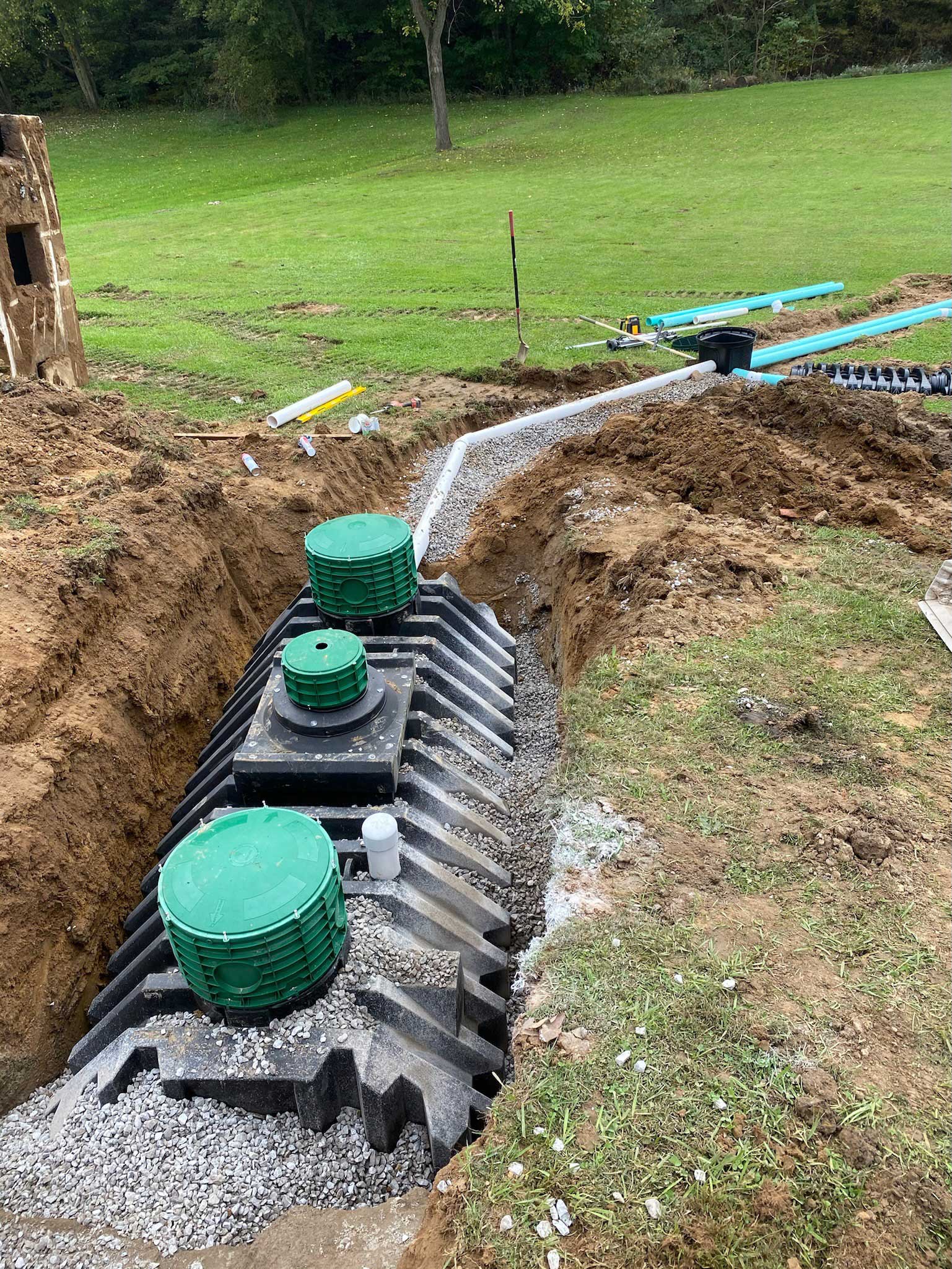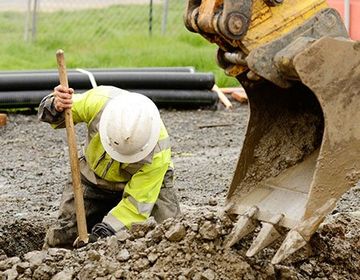Residential Excavating Ohio - Specialized Excavation for Ohio Homes
Residential Excavating Ohio - Specialized Excavation for Ohio Homes
Blog Article
Introducing the Art of Excavation: Pro Tips for Safe and Effective Excavating
In the world of excavation, the proficiency of risk-free and effective digging is an art type that needs accuracy, understanding, and adherence to recognized practices. As dirt is transformed and earth is relocated, the details of excavation expose themselves, demanding an eager understanding of devices, soil composition, safety and security procedures, and environmental considerations. The know-how required to navigate these aspects effectively can mean the distinction between an effective excavation job and a potential calamity. By deciphering the layers of this intricate procedure, a world of strategies and understandings awaits those looking for to raise their excavation skills to brand-new heights.
Relevance of Correct Equipment
To ensure the safety and security and efficiency of any type of excavation task, utilizing the suitable tools is paramount. The right devices not just enhance performance yet also mitigate risks linked with digging. Excavation tasks vary in extent and complexity, varying from small property landscaping tasks to large-scale construction tasks. Despite the job size, having the right tools can make a considerable difference in the outcome.
These functional makers come in numerous sizes to fit various task needs. Tiny excavators are ideal for smaller sized tasks, while bigger excavators deal with much more extensive tasks effectively.
Besides excavators, other critical devices consists of dump vehicles, bulldozers, and plates. Unload trucks are crucial for removing and carrying excavated materials, while trenchers are utilized for digging deep and narrow trenches. Bulldozers excel in tasks that need pushing large amounts of dirt or particles. By spending in the proper tools, excavation projects can be completed safely, on schedule, and with precision.
Understanding Dirt Make-up
A detailed understanding of dirt make-up is basic for performing excavation projects with precision and safety. Comprehending the various types of dirt is important as it directly affects excavation techniques, tools option, and total task effectiveness.
Sand particles are the largest and offer good drain however use little cohesion. Silt bits are smaller than sand but larger than clay, providing moderate drainage and cohesion. Clay fragments are the tiniest and supply high communication however poor water drainage. Raw material, such as decomposing plant product, affects dirt fertility and stability.
Before starting excavation, performing soil examinations to identify its composition and characteristics is vital. This info helps in picking the proper devices, executing security steps, and developing excavation techniques tailored to the details dirt conditions - excavating ohio. By comprehending soil make-up, excavation specialists can enhance task results while guaranteeing safety and adherence to best techniques
Precaution and Methods
Comprehending dirt composition is the foundation whereupon precaution and protocols for excavation jobs are constructed, guaranteeing the health of workers and the success of the venture. When it concerns safety and security during excavation, there are numerous vital procedures that have to be executed to minimize risks and prevent accidents.
First and primary, prior to any excavating commences, an extensive inspection of the site need to be carried out to identify any kind of potential threats such as underground energies, unsteady soil problems, or neighboring structures that might position a threat. It is essential to have a qualified individual manage the excavation procedure to ensure that all safety and security protocols are followed purely.
Furthermore, all employees involved in the excavation needs to be appropriately trained in safe digging practices and the correct procedure of equipment. By adhering to these safety steps and protocols, excavation tasks can be finished successfully and without occurrence.
Efficient Excavation Planning
When embarking on an excavation task, thorough preparation is necessary to make certain performance, security, and successful end results. Efficient excavation preparation entails a number of essential steps that are critical for the smooth execution of the project. The very first step is to perform a thorough website assessment to recognize any type of prospective dangers, such as underground energies or unstable dirt conditions. This info is essential for creating a comprehensive excavation strategy that includes safety and security procedures and run the risk of mitigation approaches.
As soon as the website analysis is total, the next step is to create a clear timeline and timetable for the excavation activities. this hyperlink This includes establishing the series of jobs, tools demands, and workforce allocation. Appropriate organizing helps prevent hold-ups and makes sure that the job remains on track.

Additionally, interaction amongst all employee is extremely important throughout the Read Full Article preparation stage. Clear instructions, normal updates, and reliable control are essential for a successful excavation job. By investing effort and time in precise planning, excavation teams can substantially enhance productivity, reduce dangers, and accomplish successful results.

Managing Environmental Considerations
With increasing focus on ecological sustainability in building methods, handling environmental considerations has ended up being a crucial aspect of excavation tasks. Excavation activities have the possible to influence the surrounding atmosphere through soil disintegration, sediment drainage, habitat disturbance, and contamination of water sources. To minimize these risks, it is important to carry out best techniques that prioritize environmental management.

Moreover, appropriate waste management is critical to stop dirt and water contamination. Carrying out treatments for the disposal of harmful materials, recycling of waste materials, and minimizing making use of harmful chemicals can significantly reduce the environmental impact of excavation projects. By incorporating these techniques into excavation planning and execution, construction i thought about this firms can make certain that their jobs are not only safe and effective however likewise environmentally responsible.
Verdict
Finally, grasping the art of excavation requires a comprehensive understanding of correct devices, soil make-up, precaution, and effective preparation. By complying with these guidelines and taking into consideration ecological factors, excavations can be performed safely and efficiently. It is critical to focus on safety and productivity in every digging project to make certain effective outcomes.
As dirt is turned and earth is relocated, the ins and outs of excavation reveal themselves, requiring a keen understanding of devices, soil composition, safety methods, and ecological considerations.To guarantee the security and effectiveness of any type of excavation project, making use of the proper devices is critical.A comprehensive grasp of dirt composition is essential for performing excavation tasks with precision and security. Understanding the various kinds of soil is crucial as it straight influences excavation techniques, equipment selection, and general job efficiency. By comprehending soil make-up, excavation professionals can improve task outcomes while making sure safety and security and adherence to best methods.
Report this page